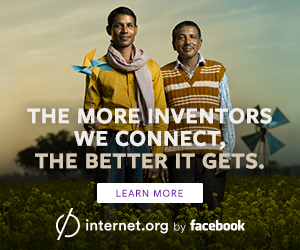Do you know what the Internet of Things is? Even if you haven’t heard that term, you probably use some device with this technology. Today we explain what it is and how users and companies benefit from its use.
What is the Internet of Things?
The Internet of Things, or IoT, is the interconnection of devices through a network, which allows interaction between them without human intervention. In this way, they can perform functions, such as being controlled remotely, receiving alerts or updates.
The object can be of all types, from sensors, switches, security cameras, appliances, autonomous vehicles, among others. It can even be used on everyday items such as clothing or footwear. The requirement is that it is equipped with the necessary hardware that allows it to connect to the Internet.
More and more sectors are using the Internet of Things. One of the best known is home automation, a term used to define the technologies that make it possible to intelligently control and automate a home.
In this way, several objects in the home are connected to the Internet and the management of these is centralized. Nowadays, intelligent assistants are booming and are a clear example of what the IoT is capable of doing. They can handle household objects, from basic tasks like making a call, controlling lights, locks, etc.
With the advent of 5G technology in the year 2020, the Internet of Things will benefit. Connection, data transmission speed and reliability will be optimized.
Also, communication between devices will be more efficient and their battery will have a longer life. As a result, the network will be able to support more elements, and it is estimated that by the year 2020, there will be 20.4 billion worldwide.
Other IoT applications
The IoT not only benefits the users, but also the companies, because it allows them to improve their productivity and profitability.
Among the various contributions is the real-time monitoring of devices and machinery, forecasting, performance evaluation and, therefore, reduction of errors and costs.
In addition, it facilitates the geolocation of products and goods, and in case of shipments it is possible to trace them. By having interconnected devices, employee mobility is avoided and reflected in employee productivity.
In cities, the Internet of Things can also be applied, being one of the main tools of the Smart Cities.
By means of sensors it is possible to manage traffic, transport, lighting, irrigation systems or waste, and thus have a control, maintenance and energy saving.
Likewise, video surveillance systems improve security by keeping track and thus having the ability to respond quickly to incidents.
One of the most interesting examples is the use of IoT in livestock farming. The animals have sensors that are connected to the Internet, which allows them to be geolocated, register their weight, temperature, among others.

Thus, it is possible to determine if they present any health problem and even know if they are fertile because of the change in their routine. In this way, farmers can take action quickly.
IoT risks
Since the devices are connected to the Internet, they are exposed to risks and this is the fear of many users and companies. The reason why they are more vulnerable is that some do not comply with security standards than other network devices do.
Some of their shortcomings are that they do not force users to change their default credentials, they have insecure configuration web pages, they lack encryption in communications, and they do not update security flaws.
On many devices it is not possible to install security software, unlike computers.
This way, information sent through the network could be captured and manipulated, other connected elements could be reconfigured to malfunction or to attack more computers in the same network.
That is why the router, which is the gateway, is the one that must guarantee protection and security to the other elements of the network.
A case of cyber attack through IoT devices occurred in 2016 by the Mirai malware, which used the default credentials in computers with deficient security, thus gaining access to the network and later leaving the system in a non-operational state.
IoT in Spain
The Internet of Things is present all over the world and in Spain it is becoming more and more popular, currently being the fifth country in Europe to invest in it, after Germany, United Kingdom, France and Italy. The arrival of 5G next year will ensure that more devices can be effectively connected.
Despite this, Spain is one of the countries with the most attacks on IoT devices. Because many of them are vulnerable or do not have a security measure in place and are the gateway to other computers, they are the target of cyber criminals. The most common are small business routers and video surveillance cameras.
Undoubtedly, the Internet of Things will continue to surprise us in the future with new applications and solutions to everyday life.
That is why professionals capable of understanding it, managing and guaranteeing the security of the network are required, such as those of Microcomputer Systems and Networks. Find out about our Medium Degree in online mode that will prepare you to face this and other computing challenges.











